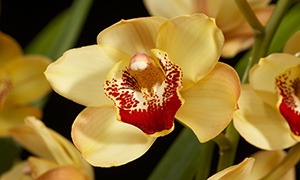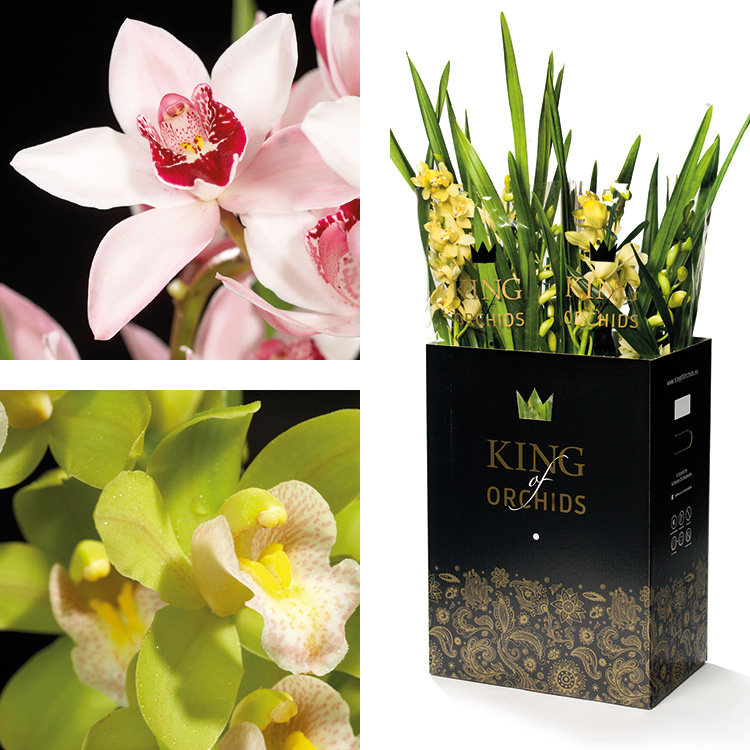
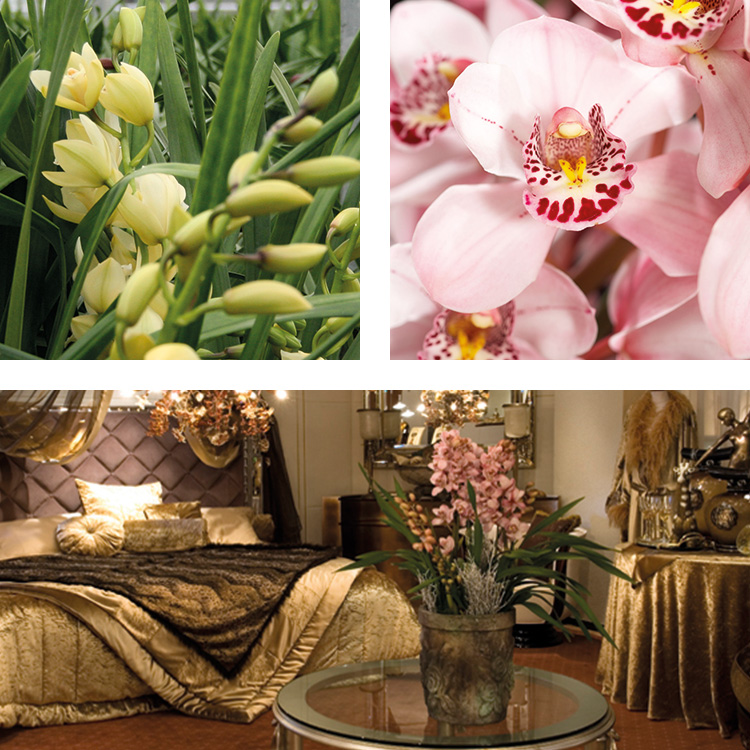
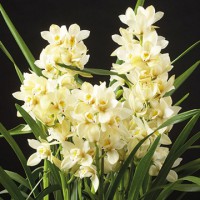
The world's most beautiful orchids have a name: King of Orchids. It's the name that stands for luxury. For exclusivity. The luxury and exclusivity which are characteristic of the pot Cymbidiums from Scholte Orchideeën. You can recognise every Cymbidium by the profuse flowering, with a host of flowers in magnificent colours and prints.
The King of Orchids cymbidiums are personally selected and delivered at precise the right moment of ripeness. That is why the Cymbidiums are always of the highest quality.
The King of Orchids plants are unique cultivars. Each cultivar flowers profusely, with a host of flowers in magnificent, intense colours and prints. With the King of Orchids plants you have a plant which will be in full bloom for more than 8 weeks. And with the correct care the plant can even flower for longer! Click here to go straight to the care tips.

King of Orchids is supplied in a luxurious box with a gold print, with 4/5 uniform Cymbidiums per box. The exclusive packaging lends extra appeal to the display in the store. And with their special label and decorative sleeve King of Orchids is also the perfect gift for a customer who wants to give something special!
The pot Cymbidium is an elegant and remarkable plant. The Cymbidium has long, narrow green leaves and long flower spikes with 6 or more flowers per spike. The flowers have an elegant, mysterious appearance. King of Orchids plants feature at least 2 flower spikes. The Cymbidium is a soil orchid: the plant grows in the soil and only has underground roots, unlike many orchids which have aerial roots. The Cymbidium's colour spectrum runs from white, yellow, green, pink and red through to brown. The older a plant is, the more flower spikes it has.
The ancestors of today's Cymbidiums originated from the forests of the Himalayas at a height of 1,200 to 2,800 metres. From the mountains of India the Asiatic Cymbidium belt extends to China, Korea and Japan as far as the warmer south.
We use meristem cultivation to propagate our pot Cymbidiums. This is the propagation of plants by using a microscope to remove cells from the heart of a growing shoot. These cells ('meristems') are placed in a nutrient base and shaken continuously in order to encourage cell division. This results in an ever larger clump of green tissue which is then divided into small segments until there are enough pieces. We call this propagation.
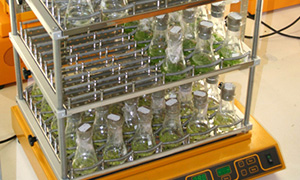
As soon as the plants are 5 cm tall and have formed roots, they are placed in a special tray. The young plants are kept evenly damp in a warm greenhouse. This process causes the plants to grow rapidly.

After 6 to 9 months the plants are large and strong enough to be brought to Scholte Orchideeën for further cultivation. The young plants are transferred from the trays to their own pot.
In the first year the plants need to 'root' - develop good roots. Scholte Orchideeën uses organic cultivation methods. The aim is to create the perfect climate for optimum growth in the greenhouse. This is a process that we continuously tweak.
This phase lasts about 18 months.
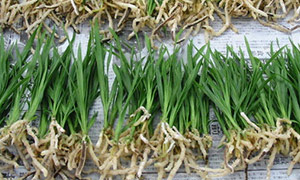
After around 36 months (this does depend on the cultivar) we space the plants out further in the greenhouse. Each cultivar has its own flowering period.
After repotting the Cymbidiums grow for 24 to 36 months before the plants start flowering. High temperatures and a lot of light induce bud formation. This means that the plant starts to make flowers.
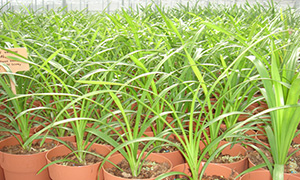
After a long and intensive 5 year cultivation period, the Cymbidium is ready to go to the consumer. Scholte Orchideeën works with exporters to supply Cymbidiums throughout Europe.
The Cymbidium's flowering period is roughly 6 to 8 weeks. It's also possible to get the plant to flower again. Click here for tips on how to get the plant to flower.
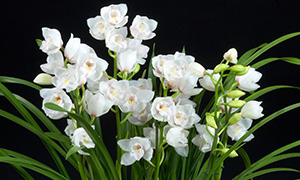
Scholte Orchideeën is a modern orchid nursery which specialises in growing large-flowered and medium-flowered pot Cymbidiums. Our extensive range includes more than 100 cultivars. Scholte Orchideeën strives to grow the perfect Cymbidium. Together with our team of committed, experienced and well-trained employees we grow plants of the highest quality. You can gain inspiration from the colours, prints and examples of our many cultivars.
Cymbidiums like a light position, but no direct sunlight during the growing season (March to September). During this period the sun is too intense and can burn the leaves.
Cymbidiums prefer to be at room temperature: between 15 and 25 degrees Celsius. Do not place the plant too close to a heat source, such as a radiator or open hearth. Ensure fresh air and avoid placing the plant in a draught, and do not allow the plant to get cold.
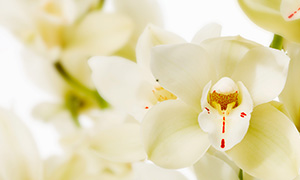
It's best to immerse the plant rather than using a watering can. Immersing the plant means placing it in a bowl of water once a week for 10 minutes, so that roots can soak up water. Allow the Cymbidium to drain well and avoid surplus water in the pot. The plant cannot cope with having its roots standing in water in the outer pot for an extended period of time. This method ensures that you never overwater the plant.
It's best to immerse the Cymbidium as soon as you've bought it.
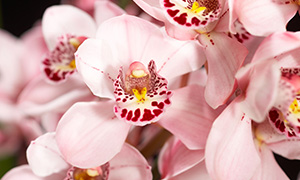
You can give the plant a little bit of special orchid food once a month. Add this food to the water when you immerse the plant.
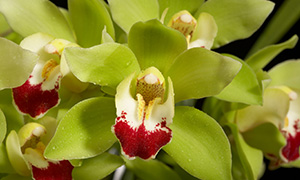
After 1.5 to 2 years the Cymbidium will have outgrown the grower's pot in which it comes. You can repot the plant into a larger pot. Make sure that the new pot has holes in the bottom in order to drain excess water. This prevents the roots from rotting.
The plant likes an airy soil mixture, so don't press down the soil too hard. Use special orchid soil for this. After repotting it is best to use a watering can to give the plant water at room temperature in order to achieve the best join between the soil and the roots. This encourages speedy root development. Then give half the usual amount of water for 2 weeks. You can then start immersing the plant again, once a week for 10 minutes. After 4 to 6 weeks you should start feeding the plant every month.
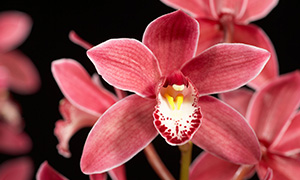
You can place the Cymbidium in the garden or on the patio in the summer months, preferably in partial or light shade. When the weather gets colder and wetter, and in any case before the first frost, you should bring the plant indoors and place it in a light, cool spot (approx. 10 to 15 degrees Celsius). The plant requires less water in winter. After the winter period you can place the plant indoors, so that it starts flowering again. This is how to get years of pleasure from your Cymbidium.
